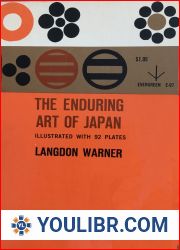
BOOKS - The Enduring Art of Japan


US $9.95

755485

755485
The Enduring Art of Japan
Author: Langdon Warner
Year: January 1, 1952
Format: PDF
File size: PDF 11 MB
Language: English
Year: January 1, 1952
Format: PDF
File size: PDF 11 MB
Language: English
Langdon Warner served as an expert consultant to the Arts and Monuments Section, G.H.Q. of the Supreme Commander, Allied Powers of Japan from April to September of 1946. During World War II, he appealed to the Roberts Commission for the protection of the former Japanese capitals of Nara and Kyoto during bombings of the country. The cultural heritage of these two shrine cities was preserved due to Warner's tremendous influence. Warner was an exemplary archaeologist and scholar of Asian art. Having been graduated from Harvard University in 1903, he made his first trip to Asia the following year as part of the Pumpelly-Carnegie Expedition to Russian Turkestan. From 1917 to 1923 he was Director of the Pennsylvania Museum of Art, then returned to his alma mater when he was named a field fellow, and later Curator of Oriental Art, at Harvard's Fogg Museum. Warner led the First and Second Expeditions to China in 1923 and 1925 for the Fogg, in 1925 worked as a field agent for the Cleveland Museum of Art, and also acquired artworks for the Nelson Gallery of Art in the 1930s. Warner was described by John Rosenfeld, Professor Emeritus of East Asian Art at Harvard, as "the United States' first full-time teacher of Asian art, universally recognized as a voice of reason and compassion." He taught many notable Asian scholars, including fellow Monuments Man Laurence Sickman, Director of the Nelson-Atkins Museum of Art. Although he was a museum man for many decades, Warner's true passion was in the field, where he worked as an explorer, archaeologist, and collector of Asian art. It has even been said that he is the inspiration for the character of Indiana Jones. Warner was also the author of many books on Asian culture, including The Enduring Art of Japan and Japanese Sculpture of the Tempyo Masterpieces of the Eighth Century. Following his death in 1955 at the age of 73,






